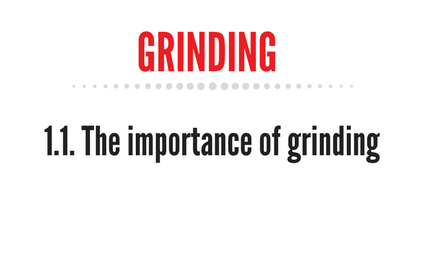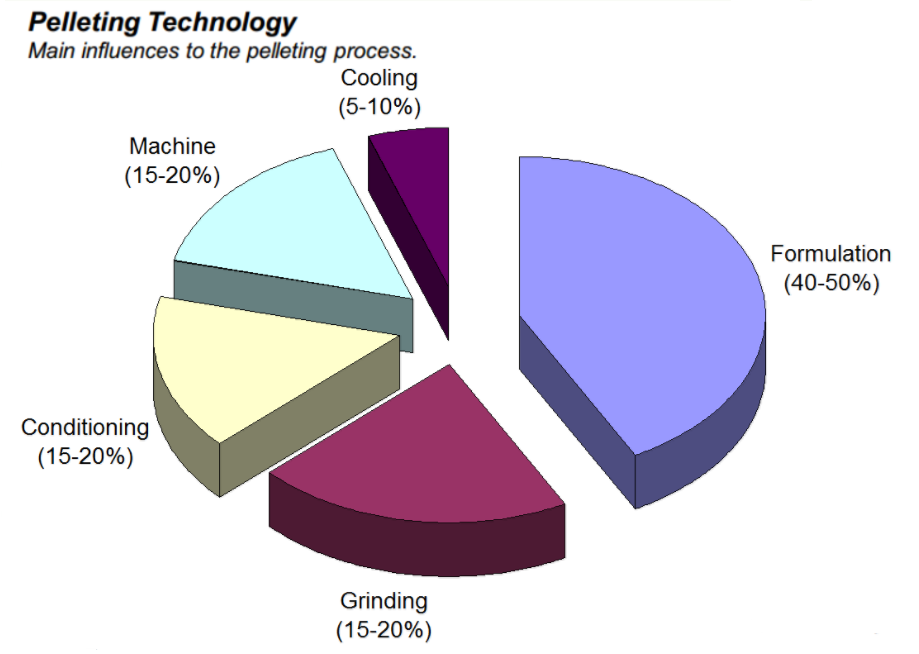The importance of grinding

Particle size reduction is the first step in the feed manufacturing process and, in terms of pellet mill operations, has a great influence on pellet quality (between 15% and 20%).

Fine particle structures are favorable for:
- mixing homogeneity,
- agglomeration,
- processability,
- fat and liquid absorption,
- low wear.
At the same time, high contents of fines are not favorable for:
- healthy nutrition,
- flowability,
- feed intake,
- dust formation and explosion safety
Among the various stages of the pelleting process, grinding is one of those that consume more energy, but it’s essential for pelletizing because it allows to create a homogeneous mixing and to reduce the volumes. In fact, in the compound-feed production process 60% of the total energy consumption is used for pelleting, 16% for milling, 14% for conveying, 7% for receiving, 2% for mixing and 1% for delivery.
Grinding, or particle-size reduction, is a major function of pellet manufacturing for several reasons, all of them improving the ease of handling ingredients and their storability:
- clumps and large fragments are reduced in size;
- some moisture is removed due to aeration;
- additives such as antioxidants may be blended.
Grinding, or particle-size reduction, is a major function of pellet manufacturing for several reasons, all of them improving the ease of handling ingredients and their storability:
- clumps and large fragments are reduced in size;
- some moisture is removed due to aeration;
- additives such as antioxidants may be blended.
Summing up, we can say that the grinding of ingredients generally improves feed digestibility (even if an excessively fine grinding is not recommended because it causes digestion difficulties and requires an excessive consumption of energy), acceptability, mixing properties and pelletability and increases the bulk density of some ingredients.
Within a feed mill, two solutions can be adopted: pre-grinding and post-grinding. Pre-milling occurs when each individual component is milled individually before mixing, instead, post-milling takes place when the components are weighed and mixed before being milled.
Pre-grinding allows you to grind better and faster, saving time and energy. However, the product already ground into flour is more complex to handle and requires the use of appropriate silos that facilitate the extraction. For these reasons, now in the most cases, the feed industry in Europe is shifting on post-grinding, although this system requires more effort in balancing the ingredients. In modern plants that use post-grinding, a separator is inserted before the mill that bypasses the fine parts, making the process more efficient.
Both the pre-milling and post-milling systems can be:
- direct
- direct with pre-sieving
- with recirculation after milling
- with pre- and intermediate-sieving
- direct with pre-milling and direct with post-milling